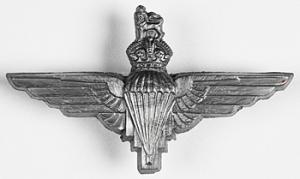The Parachute Regiment
One of the most important regiments in the re-taking of the Falkland Islands was the Parachute Regiment, which showed its prowess in such battles as Teal Inlet, Mount Longdon and Goose Green.
The Parachute Regiment is well known for being a key part of the Falklands battle and is especially recognised for the battles it successfully fought at Teal Inlet, Goose Green and Mount Longdon during the conflict. 3 Commando Brigade comprised all land forces during the Falklands War, while the Spearhead Battalion linked to 3 Commando was 3 Battalion, the Parachute Regiment. The regiment departed UK shores for the Falklands on 9th April 1982, merely a week after the invasion of the Argentines forces. They travelled aboard a military ship called the SS Canberra, while a linked unit, 2 Battalion, the Parachute Regiment, followed in their wake, departing UK shores on 26th April 1982 and travelling aboard MV Norland to the Falkland Islands.
Arriving at Ajax Bay on 21st May, 3 Commando Brigade quickly made a base on Sussex Mountain, in order to oversee and protect the south of the bridgehead. 3 Para, meanwhile, arrived close to San Carlos Bay and, following a short battle with a small number of Argentine troops, also created a base. Daily attacks from the Argentine air defences followed and all British troops were forced to contend with this constant threat.

Five days after arrival, on 26th May, 2 Para moved to the Darwin/Goose Green peninsula in order to try to attack and take hold of the Argentine Strategic Reserve and airfield. This attack took place on 28th May, with help from naval gunfire. However, the usual reliable support from the helicopters and the Sea Harrier planes was not present due to the thick coastal mist making visibility too poor. 2 Para were therefore forced to bring an infantry attack against an extremely well-established Argentine unit with heavy machine gun banks – no easy task. H. Jones, the lead commander of 2 Para, was killed in the attack he led against one of the many Argentine machine gun positions. However, the determination and planning of the British troops won out and on 29th May, the Argentines were forced to surrender.
Meanwhile, 3 Para were hard at work taking control of Teal Inlet, a task they had begun on 27th May. They succeeded two days later and were then ordered to move ahead and launch an attack on Mount Longdon, which began on 11 June and lasted just one day before they succeeded. While carrying out the attack on an Argentine position, Sergeant Ian Mackay was killed and was subsequently given a posthumous Victoria Cross in return for his bravery, making him the second man to receive one in this regiment. 3 Para were 22 men down by the end of the attack on Mount Longdon, as they were forced to remain in position for a further two days after they had taken Mount Longdon. While they remained in place, 2 Para attacked Wireless Ridge on 13 June, succeeding quickly due in part to help from 3 Para, who provided mortar fire. This success boosted British troops and Argentine resistance quickly fell by the wayside, allowing the British a smooth and fast move to Port Stanley. Men from these two regiments, 2 Para and 3 Para, were the first to gain entrance to Port Stanley, highlighting the key part they played in the overall conflict.
See also: The Sea King Helicopter
MLA Citation/Reference
"The Parachute Regiment". HistoryLearning.com. 2026. Web.
